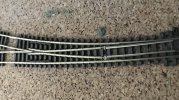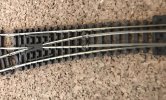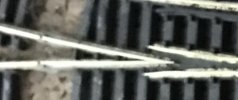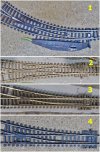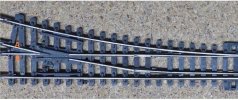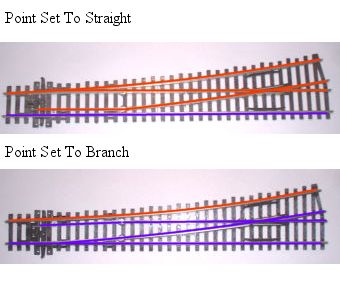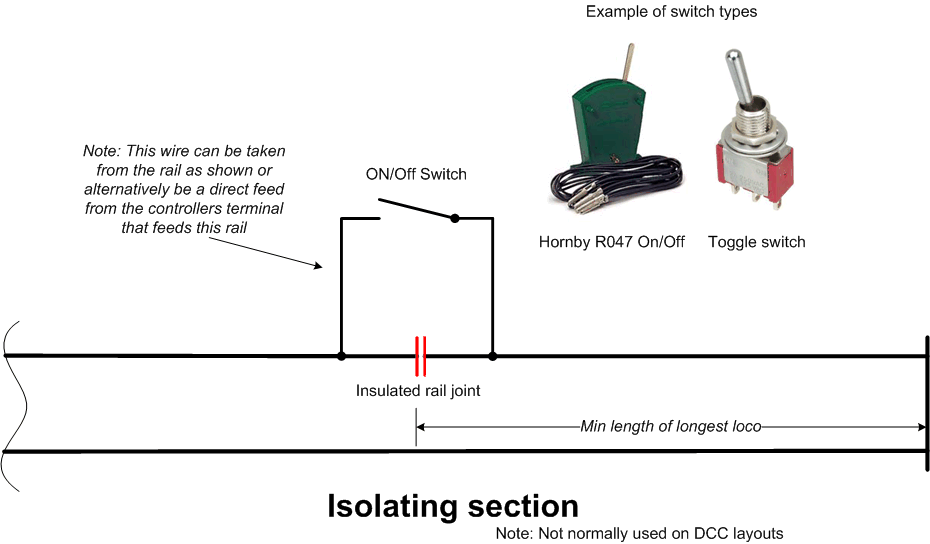If you are using insulfrog points the route selected is the one that get energised as the point does the switching of the power, thus, in the case of a set of sidings or bay platform, the point can be set to one route, the loco can enter the siding (or bay platform) and once fully passed the point can isolated by moving the point to the straight position rather then the branch.
If you use electrofrog with the same setup, as insulated joiners are fitted to either just the inner rails that go to the frog, or all four rails that form the branch or main tracks. the tracks the point is connected to is always dead so separate power feeds are required to them.
If the feed to the bay or siding is via a switch the the loco is totally isolated.
As you will see in the lower image the two inner rails of an elecrofrog point become the same polarity as the frog joins them together, hence the need for insulation joints as they will otherwise cause a direct short. Most electrofrog points have a frog wire that connects to the centre pin of a single pole double through (SPDT) switch. Power is then connected to the outer two pins of the switch. When the switch is in one position the positive feed is connected to the centre pin and thus the frog. Changing the switch to the other position connects the negative feed. Most point motors have this switching option so the polarity is changed as the point is changed automatically.
The switches can also be used to isolate sections of sidings or the ends of terminus lines, so for example the loco that brought the train in can be isolated so another loco can be attached at the other end and take the train back out. Here the switch is used to bridge the connection (although using the switch as mentioned above still works)
In the above the SPDT switch can be used, with the power from the rail or the feed going to the centre pin, and the wire to the track that is being isolated connected to either outer pin
There is a lot of information on track electrics, either DC or DCC on the internet. This site
https://www.pls-layouts.co.uk/html/frog_types.htm is very helpful and was where the diagrams above were found.
Hope that helps

